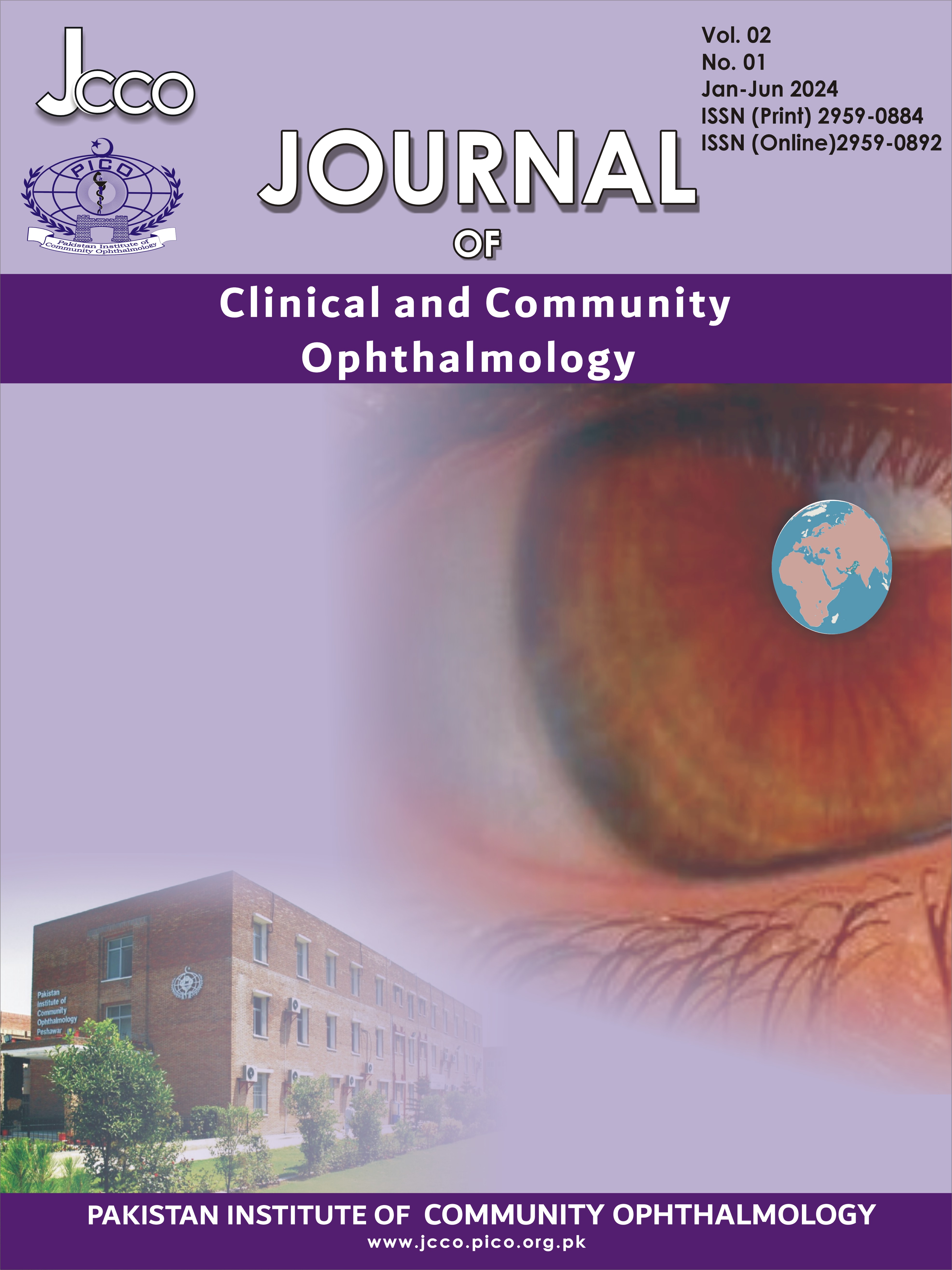Pattern of Ocular Trauma in Patients Presenting to a Tertiary Care Hospital
DOI:
https://doi.org/10.71177/jcco.v2i01.52Keywords:
Blindness, Trauma, Ocular Injury, Visual LossAbstract
Aim: To determine the pattern of ocular trauma in patients presented to a tertiary care hospital.
Study Design: A descriptive cross-sectional study.
Duration and Setting of the Study: Outpatient Department of Munawwar Memorial Hospital Chakwal, Pakistan from 1 September 2020 to 31 December 2020.
Methods: With informed consent, data including age, gender, occupation, and nature of the object was collected from the patients presenting with a history of ocular trauma. The visual acuity of each patient was recorded using the Snellen Visual Acuity Chart at a distance of 6 meters. Details of the anterior chamber were recorded using Slit lamp biomicroscopy while and examination of the posterior chamber was carried out using direct and indirect ophthalmoscope after dilating the pupils with 0.5% tropicamide eye drops. Data was analyzed by using SPSS V-20 (SPSS Inc. Chicago, USA). Descriptive statistics were applied for data analysis.
Results: Eighty-four patients presented with ocular trauma to the OPD and emergency during study duration. The range of age was 4-70 years. The male to female ratio was almost 3:1. Blunt trauma accounted for 38(45.2%) of cases followed by foreign body 28(33%), organic trauma 11(13%), chemical injury 5(5.9%), and penetrating trauma 2 (2.3%) patients. The most common site of ocular injury was the cornea 31(36.9%) followed by eyelid 7(8.3%). More than half of the subjects had trauma from the workplace and 89% were not using protective eyewear.
Conclusion: Ocular trauma more commonly occur in young male individuals. Blunt trauma was also more common than the other types of ocular trauma.
Downloads
Published
How to Cite
Issue
Section
License
Copyright (c) 2024 Marukh Aamir, Iqra Khalil, Bushra Kanwal

This work is licensed under a Creative Commons Attribution-NonCommercial 4.0 International License.






